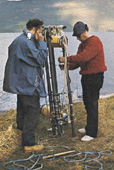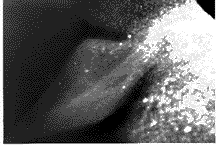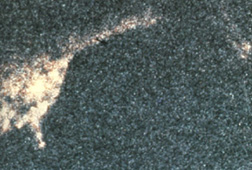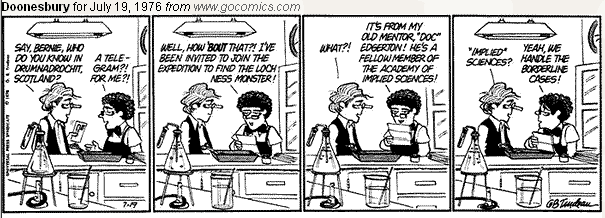THE ACADEMY OF APPLIED SCIENCE
In 1970, the Americans descended on Loch Ness and took over the search after LNIB (The Loch Ness Investigation Bureu), making their chief Tim Dinsdale their guide.
Dr. Robert H. Rines, founder of Academy of Applied Science, came with collegues Isaac S. Blonder and Dr. Martin Klein, stayed for
two weeks and used a sidescan sonar. The result was  meagre. They returned again next year, spent six weeks at Loch Ness and one week in Loch Morar, also said to inhabit an unknown creature. This time the Americans
used underwater photography and hydrophone/playbacks sets.
meagre. They returned again next year, spent six weeks at Loch Ness and one week in Loch Morar, also said to inhabit an unknown creature. This time the Americans
used underwater photography and hydrophone/playbacks sets.
On the night of August 7-8, 1972, Dr. Rines and his team was operating an underwater camera and sonar in Urquhart Bay from aboard the LNIB research vessel Narwhal, which was moored approximately 60 yards from the shore near Temple Pier, when "a sudden echo exists with the dimension of about 10 feet, and shows for less than a minute. It appears to be correlated with the extended echo return, moving at the same speed and would appear to be an appendage brought into reflective aspect for a short period of time", as stated in a LNIB confidential newsletter. Back in the USA the film-cassette was delivered to Eastman Kodak to be processed under control.
In one picture a quite definite flipper-like
shape could be seen, optically measured as about 6 to 8 feet with a maximum width of 2 to 4 feet. Fifteen seconds later, a tail-like structure at least 8 feet long appeared, at about the same time as the sonar chart recorded a
10  foot appendage. Fifteen seconds later there was clear water again. The intruder had left the area.
foot appendage. Fifteen seconds later there was clear water again. The intruder had left the area.
What soon became known as "The Rines/Edgerton Flipper Picture" first caused a sensation, then was debunked. Sceptics called it everything from a lost anchor to a misinterpretation on behalf of yankees trying to steal the proudness of the Scottish people. But the two men behind the picture, professor Harold Edgerton at the Massachusetts Institute of Technology and Dr. Robert Rines, President of the Acadamy of Applied Science, knew now that it was worth to continue their search and many zoologists that had to remain anonymous for fear of ridicule among collegues, encouraged them to go on.
The summer of 1973 was a cold one, so cold that a new automatic underwater station in Urquhart Bay failed to work due to the ice-cold water, which had the lubricant in the cameras to soldify. Next year the Academy team tried again. This time with another development; the computerised sonar-trigger linked to a strobe-flash camera. But on lowering the whole contraption to the bottom, one of the divers lost his nerve and abandoned the task in mid-water. The station fell over and damaged the camera, thus wrecking the whole experiment. Bob Rines and Tim Dinsdale made another important discovery though. On the loch in Tim's boat Water Horse, with a special sonar-mapping machine, they found that the sonar pulse could penetrate the bottom silt, and that they could "see" the Great Glen split beneath it. This discovery showed that Loch Ness was part of a colossal fault, shaped like a giant V, perhaps 8-9.000 feet from mountain tops to bottom. Deeper than the Grand Canyon in America!
So in 1975, after two years of setbacks and disasters, the Goddess of Good Fortune was again to smile upon the monster-hunters. With the aid of professional divers they could trust, Bob Rines and Tim Dinsdale managed to get the new sonar-trigger station down in eighty feet of pitch vlack water, beneath Hunter, their station boat. Within eight days there had been two huge "intrusions" on the chart, and twenty-three underwater photographs had been taken.When the film was developed in America, the pictures were disappointing. They showed only what could have been a cloud of silt, stirred up by the Monster passing. However, when the film from the old strobe-camera set (which had been dangling over the stern of Hunter at night on a thirty foot rope) was developed, out of hundreds of 16 mm frames showing nothing but water, a few had recorded objects which were to cause great interest, and a frenzy of media excitement.
These pictures were not entirely clear, because of the peat-water, but they were real. One showed a very strange and ugly object, which could have been a head barely eight feet distant, and another showed a flattened horse-like head, attached to a long neck and bulbous body, arising from the depths.



Dr. Rines most controversial underwater pictures, body, neck and an ugly head. It was this last picture which staggered everyone, because - allowing for the murky water - it looked just like a Plesiosaur, and was soon to become known as the "Plesiosaur Picture". The implications of these new results were so staggering that Bob Rines, the LNIB directors, the Royal Society of Edinburgh, and the Universities of Heriot-Watt and Edinburgh, decided to jointly hold a scientific Symposium to discuss the Monster, and the evidence for it, both past and present - to which scientists, fieldworkers and witnesses would be invited.
Unfortunately news of this leaked out, and a huge bubble of media interest and excitement began to inflate. A great deal of nonsense and rumour was published, with the eventual result that the "Edinburgh Symposium" was cancelled. It was a sad anticlimax, which left the public knowing not what to believe. But a meeting did in fact take place on December 10, 1975, in the Grand Committee Room at the House of Commons. It was a much shorter affair, with a scientific presentation lasting only two and a half hours, but the attendance was impressive. Members from both Houses of Parliment, scientists and zoological experts all turned up to hear the monster-hunters put their case. Arguments for and against the Monster were aired, and opinions were atated: the British Museum scientists doggedly saying no to it, while others from abroad said the opposite. It was an exciting event.
The following day the scientific journal Nature published an article about the underwater photos and sonar charts from 1972 and 1975, and printed the Latin name Nessiteras rhombopteryx - meaning "Ness Monster with a Diamond Fin". This title had been suggested by Sir Peter Scott, the naturalist, and Mr. Alan Wilkins, a classic scholar. Unfortunately crossword anagram experts soon pointed out this could be made to read, "Monster hoax by Sir Peter S." when the letters were juggled about. This confused the public even more - but Bob Rines soon found another anagram; "Yes, both pix are Monsters R", which helped to even the score. The events in December 1975 did not succeed in establishing Nessies existence as a fact, but they went a long way towards establishing the facts about the monster and paved the way for more experiments and searches.
Curiously, the entire episode inspired Gary Trudeau to base a two week series of Doonsbury comics on the actual people involved in the expedition. Click the image to view the entire series:
 Doonesbury (c) 2008 G.B. Trudeau. Used by permission of Universal Press Syndicate.
All rights reserved. Source: www.gocomics.com
Doonesbury (c) 2008 G.B. Trudeau. Used by permission of Universal Press Syndicate.
All rights reserved. Source: www.gocomics.com
Questions on this web site? contact webmaster@blonder.com